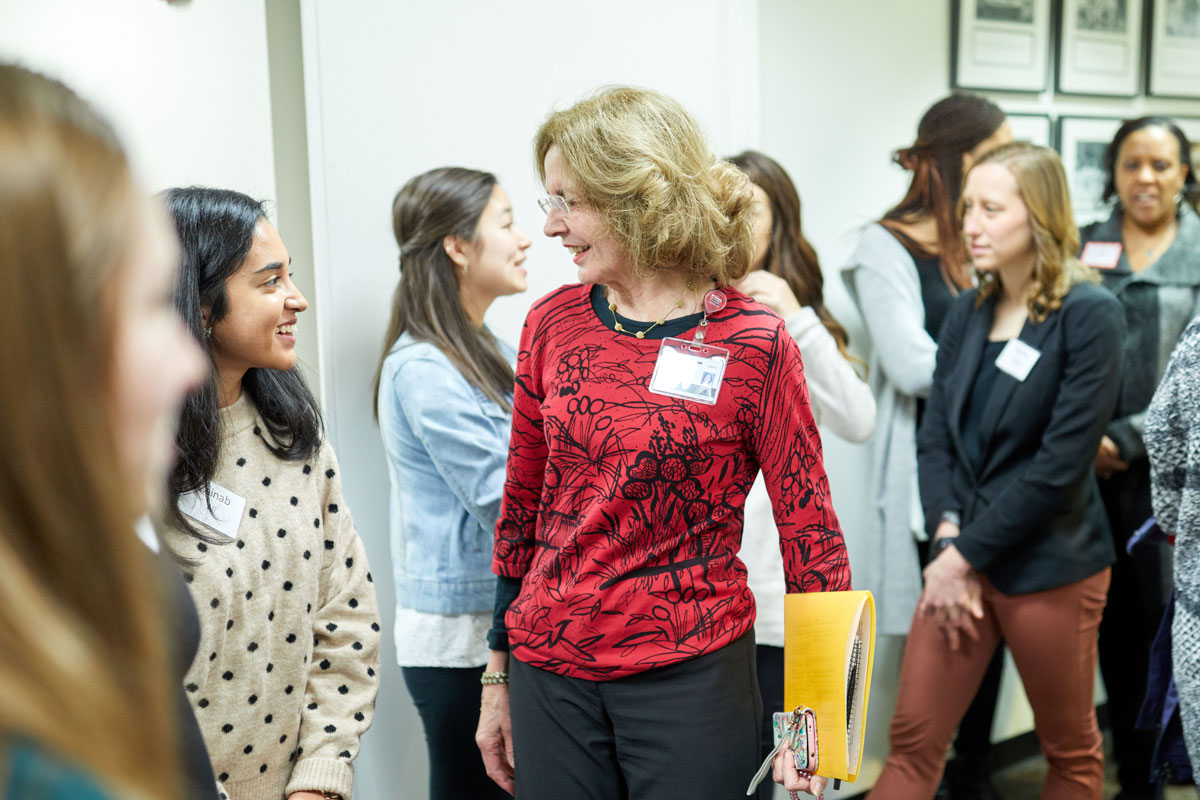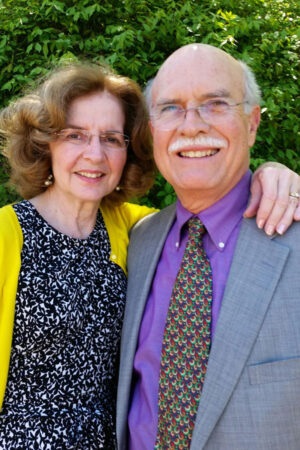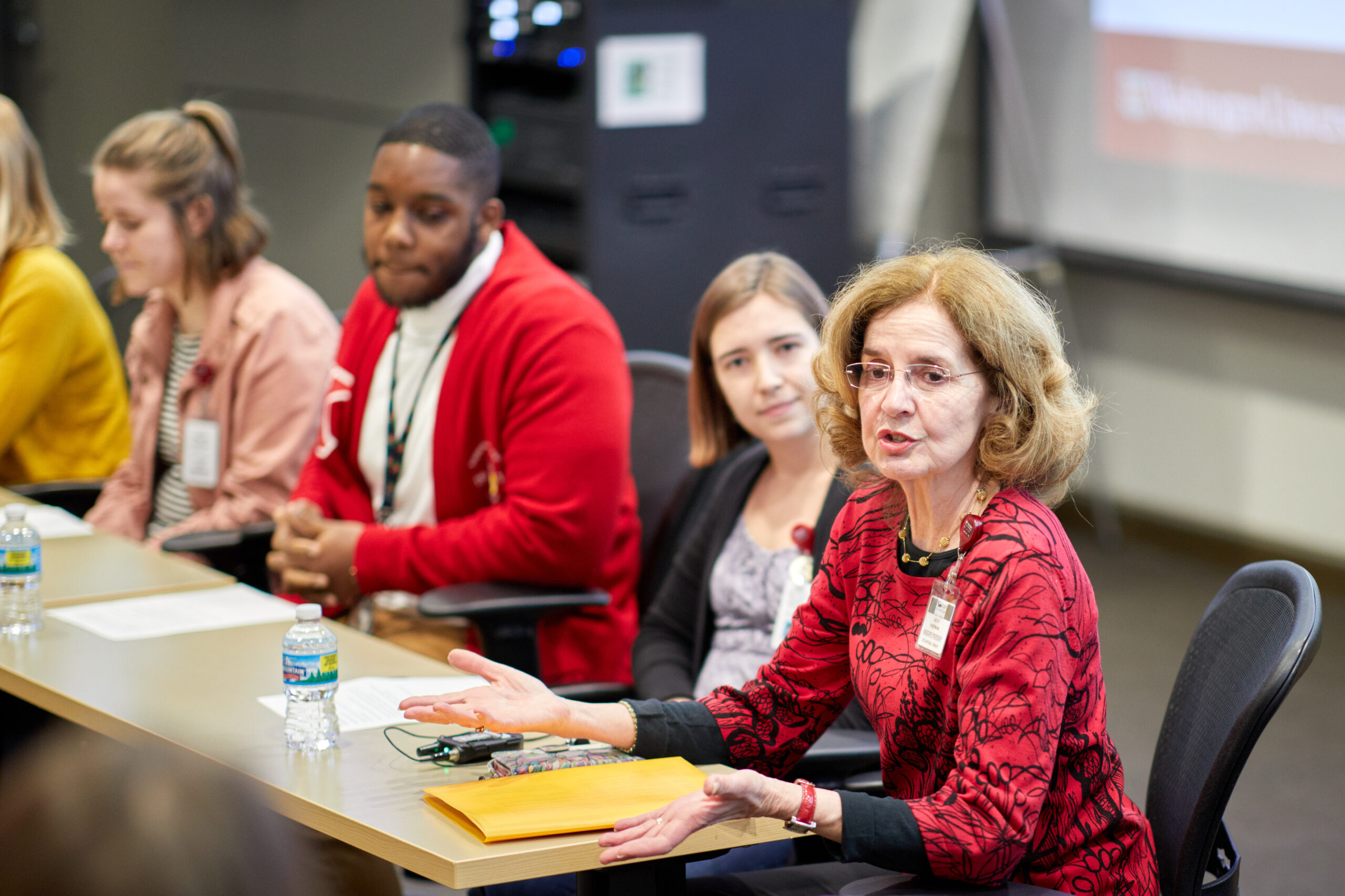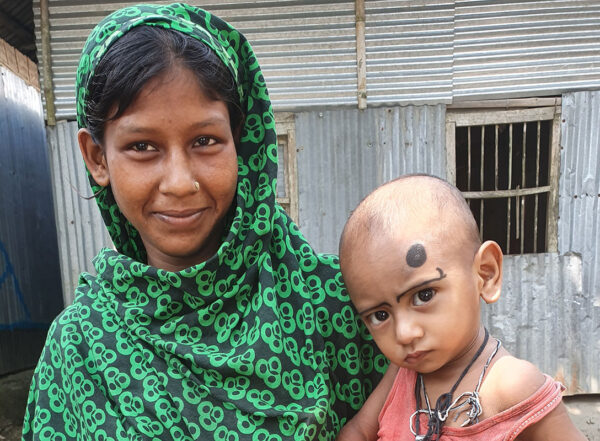Washington People: Kathy Kniepmann
Inquisitive, compassionate occupational therapy associate professor inspires prospective, current students
 Matt Miller
Matt MillerKathy Kniepmann, OTD, associate professor of occupational therapy, greets admitted students Jan. 24 as part of Admitted Students Day for Washington University School of Medicine's Program in Occupational Therapy.
Kathy Kniepmann has been a curious learner her whole life.
As a grade-schooler, she attempted her first research projects — offering the family dog a choice between clear water or water dyed with food coloring, and watering plants with clear, sugar or colored water so she could compare the results. As it happened, the dog would run away and Kniepmann was too impatient to track the plants’ progress, so results were never published.
But the seed was planted, so to speak. Kniepmann — now an associate professor of occupational therapy (OT) at Washington University School of Medicine in St. Louis — knew she wanted to learn and make things grow.
Her path to Washington University began in seventh grade, when she qualified for the St. Louis Science Fair held at the Fieldhouse. “I remember walking around the campus. My jaw dropped, and my eyes popped open,” she said. “I thought, ‘This is such a fabulous place, and all this learning is going on here – maybe someday I’ll be lucky enough to take a class here.’ ”
She was lucky enough to take lots of classes at the university, earning undergraduate degrees in English literature and occupational therapy. She then added master’s degrees in education and public health from Harvard University before returning to Washington University for her doctorate in occupational therapy.
Kniepmann, also an associate professor of neurology, now teaches on both campuses, mentors students who help her address family caregiving for relatives with stroke, and serves as a faculty associate in a residence hall on the Danforth Campus. She also leads planning and implementation of recruitment activities for the Program in Occupational Therapy.
“Kathy is our student-recruitment rock star,” said Lisa Tabor Connor, PhD, the Elias Michael Executive Director of the Program in Occupational Therapy. “She has an uncanny memory, an inquisitive nature and loves to learn about prospective students’ lives and professional ambitions. Our students tell us that her interactions with them before and after committing to the OT program were instrumental in them joining the program and feeling welcomed to our community.”
Kniepmann discussed her life, her career and what all this learning has brought her.
What led you to choose occupational therapy as a career?
I signed up for a career-exploration program one summer in 4-H, at age 16. I was interested in health care but also teaching, journalism and was open to other things. When I found occupational therapy I thought, “This is it! This profession combines life sciences, working with people, social sciences, diversity issues and giving people tools or skills so they can lead full, meaningful lives.” I was enthralled, and I was lucky enough to get a full-tuition scholarship. Here, I was like a kid in a candy store, partaking of so many amazing opportunities and meeting so many lifelong friends. As a journalism enthusiast, I wrote for Student Life and became production manager – an exciting experience, but it confirmed that OT was a much better fit for me.
 Matt Miller
Matt MillerWhat made you decide to go to graduate school?
I was working in St. Louis as an occupational therapist and started to develop informal daily-living-skills groups focused on common goals. Some people, for example, wanted to be able to fix meals again after having had a stroke that caused difficulties with performance in the kitchen. I facilitated conversations in those sessions so group members could give and receive ideas from each other rather than from just me. They also gave each other encouragement. This promoted feelings of empowerment, self-reliance and a sense that they could help each other rather than rely on therapists. During this time, I also began to realize that certain problems could be prevented if caught earlier or if people had access to helpful resources. I was inspired to explore graduate school in education and community health to prepare myself for work in an arena beyond the clinic.
In graduate school, I took a fascinating anthropology course that magnified some of what I saw in the clinic: people with different religions, socio-economic situations, and political and life experiences whose perspectives could baffle clinicians. Sometimes client backgrounds were just ignored. I wondered how we could bring our collective experiences together to learn and appreciate each other for client-centered practice, programs and policies. I took some public health electives in health education, prevention, and behavior change. Faculty advised me to pursue a master’s degree in public health so I could develop a stronger background to do the kind of things I wanted to do. I was fortunate to receive NIH funding to completely support my master’s in public health.
What did you do after earning your master’s degrees?
I got a fabulous job: building an office of health education for Harvard University. It involved developing health education resources for undergraduates, graduate students, faculty, staff and retirees. This position let me combine my background in OT, journalism, education and public health in new ways. It was at the beginning of the AIDS crisis, so I did a lot of writing and extensive outreach, then helped students develop peer education programs focused on AIDS. Fear, apathy and confusion about HIV-AIDS was rampant. Administrators at some colleges were saying, “We don’t have any AIDS cases so we don’t need to worry or do anything about it.” My response: “You want to keep it that way? You need to be proactive with very visible education and outreach. Don’t wait!”
Based on concerns and confusion among international students, I developed orientation programs about the U.S. health-care system for them. I also held educational workshops for clinicians, titled “International Students in an Alien Health Care System.” I also prepared and supervised students for outreach and peer-mentoring groups to address eating concerns, alcohol and drug issues, women’s health and other topics.
It was exciting work, but I started to miss my family. One day I called Dr. Carolyn Baum, then the executive director of the Program in Occupational Therapy, to begin networking for a job in St. Louis. She invited me to come talk to her the next time I was in town visiting family. I met with her and moved back a few months later for a faculty position. It was the end of 1992, and I have been here ever since.
What do you like best about your job?
Working with the students and watching them grow as professionals into competent, compassionate therapists fuels me! Learning from and with colleagues is rewarding. I also love recruitment — meeting the future of our profession and finding ways to increase diversity of our student body in OT.
I’m a faculty associate on the Danforth Campus, which means I’m connected with one of the first-year residence halls. I also teach two undergraduate courses on Danforth: “Disability, Quality of Life and Community Responsibility,” and “Images of Disability in Film and Literature.” Something that I try to get across to my undergraduates, and really anyone who will listen to me, is that people with disabilities can lead meaningful, healthy lives. Your diagnosis and symptoms don’t determine your quality of life. Access to resources, including social support, policies and the built environment are major contributors to participation for people with disabilities. Those factors also can be barriers. We need to work together so we can find ways to let everyone participate.
Additionally, this academic year I’ve begun teaching courses about health careers and occupational therapy at Harris-Stowe State University. I’m very dedicated to diversity, inclusion and equity.
What kind of programs would you like to develop?
I’m interested in spirituality and health. While working with families in a life after stroke program, some participants talked about their congregations as important resources. I reached out to clergy and did a small study asking about their interactions with families of people who had strokes. I believe clergy could be a bridge to the health-care system, and we could learn from them. It’s part of treating the whole person – body, mind and spirit.
I also want to help family caregivers take care of themselves while helping their relatives who have had strokes. While clinicians focus on the person who had a stroke, family caregivers often feel neglected and confused. Another challenge is that caregivers may focus so much on the relative with a stroke that they neglect themselves, which can lead to health problems and even burnout. I’ve been educating caregivers and clinicians to address these issues, and I’m involving OT students to expand and evaluate these efforts.
 Courtesy of K. Kniepmann
Courtesy of K. KniepmannTell us about your family.
I grew up on a farm in Illinois. It has been in my family for five or six generations. I have lots of relatives in the area.
I met my husband, Tom Snider, while we were both in an international percussion band. We married in 2001.
What do you do for fun?
Music fuels my heart and spirit. My husband is in several choirs, and we love going to see the St. Louis Symphony Orchestra, Opera Theatre of Saint Louis and other performances. I enjoy dancing as well as singing (at home) and making up lyrics if I can’t remember them.
I enjoy spending time with my mother, other family and friends. My childhood 4-H interests in cooking, baking and sewing continue, and I have an extensive cookbook collection. I also enjoy walking, hiking, biking and exploring.
Learning is a lifelong adventure for me. My undergrad courses bring together students with a wide range of backgrounds, majors and career paths. On the Medical Campus, the students share a common career path, but each brings a unique background. When I’m teaching or mentoring, I facilitate lively exchanges of ideas so we can all learn and grow. I learn from my students every day. In my neighborhood and in the university community I love meeting people and hearing their stories.
 Matt Miller
Matt Miller






